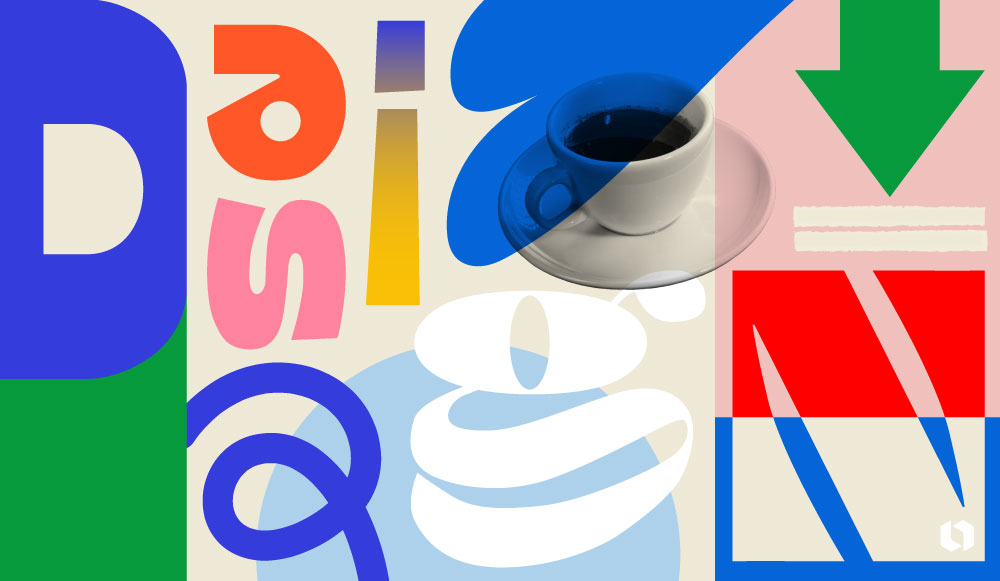If you’ve ever been struck by a poster, an ad, a website, or even the packaging of your favorite products, then you’ve been influenced by good graphic design. It’s all around you! But, what is graphic design, exactly?
Graphic design is the art of visual communication. We’ll dive into the nitty-gritty of the principles and elements that go into great design, along with the various types of graphic design you might want to get into. Don’t worry, it’s all beginner-friendly!
We’ve added graphic design examples, resources, expert quotes, and visuals to help you grasp all of the complexities.
What is graphic design in simple terms?

Graphic design is the art of creating visual content, which includes using typography, images, colors, and shapes to communicate a message. Its ultimate goal is to make information easy to comprehend.
We’re all visual creatures and graphic design is the result of that! All of its principles and elements are created to best appeal to our eyes.
Graphic Design became a profession during the Industrial Revolution, thanks to advancements in printing technology. The 20th century brought in digital technology, transforming graphic design into the dynamic field it is today. We’ve come a long way from calligraphy and the printing press!
Can I learn graphic design on my own?
Yes, you can! All it takes is consistent learning and practice. We’ve included resources like courses, YouTube influencers, books, podcasts, and design inspiration websites for you to bookmark at the end of this blog.
Here’s what Elliot Ulm, a self-taught graphic designer had to say:
“I think that anyone can develop an “eye for design” after being exposed to it for long enough. You start to learn what you think looks good and what doesn’t – then it’s just a matter of learning the technical elements which are only getting easier to master!”– Elliot Ulm, Graphic Designer
The fundamentals of graphic design
Graphic design isn’t about shooting in the dark and being creative. There are key principles and graphic design basics that make it easier to create beautiful work. That’s right! Graphic designers aren’t geniuses, they’re just well-versed in the fundamentals below.
The principles of design
- Contrast: Emphasizes the difference between elements, such as color, size, or type. It enhances visual hierarchy by drawing attention to specific components.
- Repetition: Involves the consistent use of design elements, establishing a recognizable pattern and reinforcing a uniform visual message.
- Alignment: The orderly arrangement of elements creates a clean, sharp design that guides the viewer’s eye.
- Proximity: The spatial relationship between elements, grouping related items to create a sense of organization and coherence.
- Balance: The distribution of visual weight within a design, creating stability and equilibrium, whether symmetrical or asymmetrical.
- Space: The area of negative space around and within the design elements, which can be utilized to define importance, create separation, or achieve a sense of lightness and clarity.
Oops: There’s a… memorable acronym, hidden in the list. It’ll help you memorize the concepts easily, though!
Naturally, we’ve used graphic design to illustrate these principles below. See how much easier they are to digest visually?

Next, we’ll cover design elements like color, typography, and shapes to play with in your composition. This is where you can communicate a unique style in your design. Each of these elements has the power to influence how your design will be perceived:
Graphic design elements
- Line: A fundamental element that can be used to define space, create forms, and guide the viewer’s eye throughout the design.
- Shape: whether geometric or organic, adds interest and depth to a design and is used to create visually pleasing layouts and patterns. Learn more about shapes and their meanings!
- Color: A powerful design element that evokes emotion, sets the mood, and conveys symbolic associations.
- Texture: The perceived surface quality of a design, adding depth and enhancing the sensory experience.
- Typography: The selection and arrangement of different types of fonts, enhancing readability and influencing the viewer’s perception of the message.

Get some color combination inspiration for your next design!
These principles and elements come together to create visual harmony and convey messages effectively. Use them wisely!
